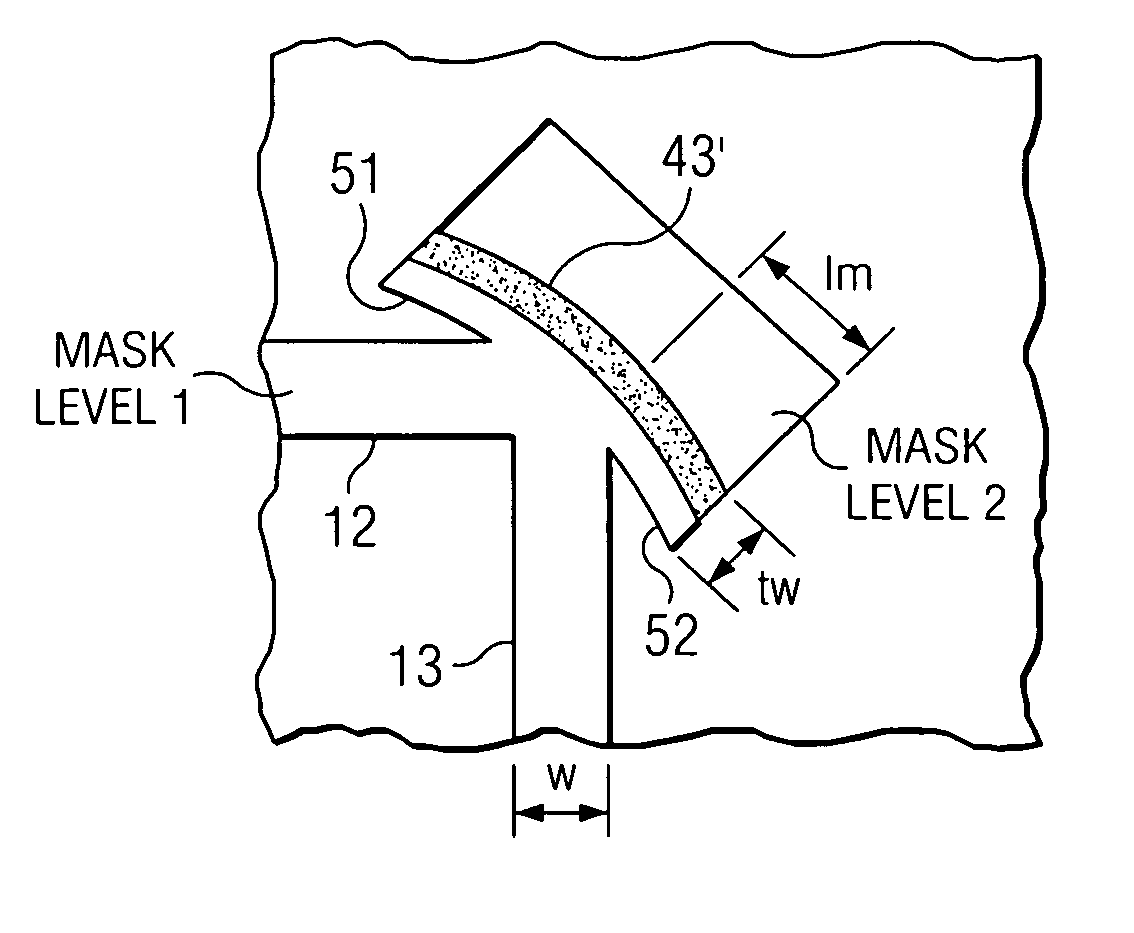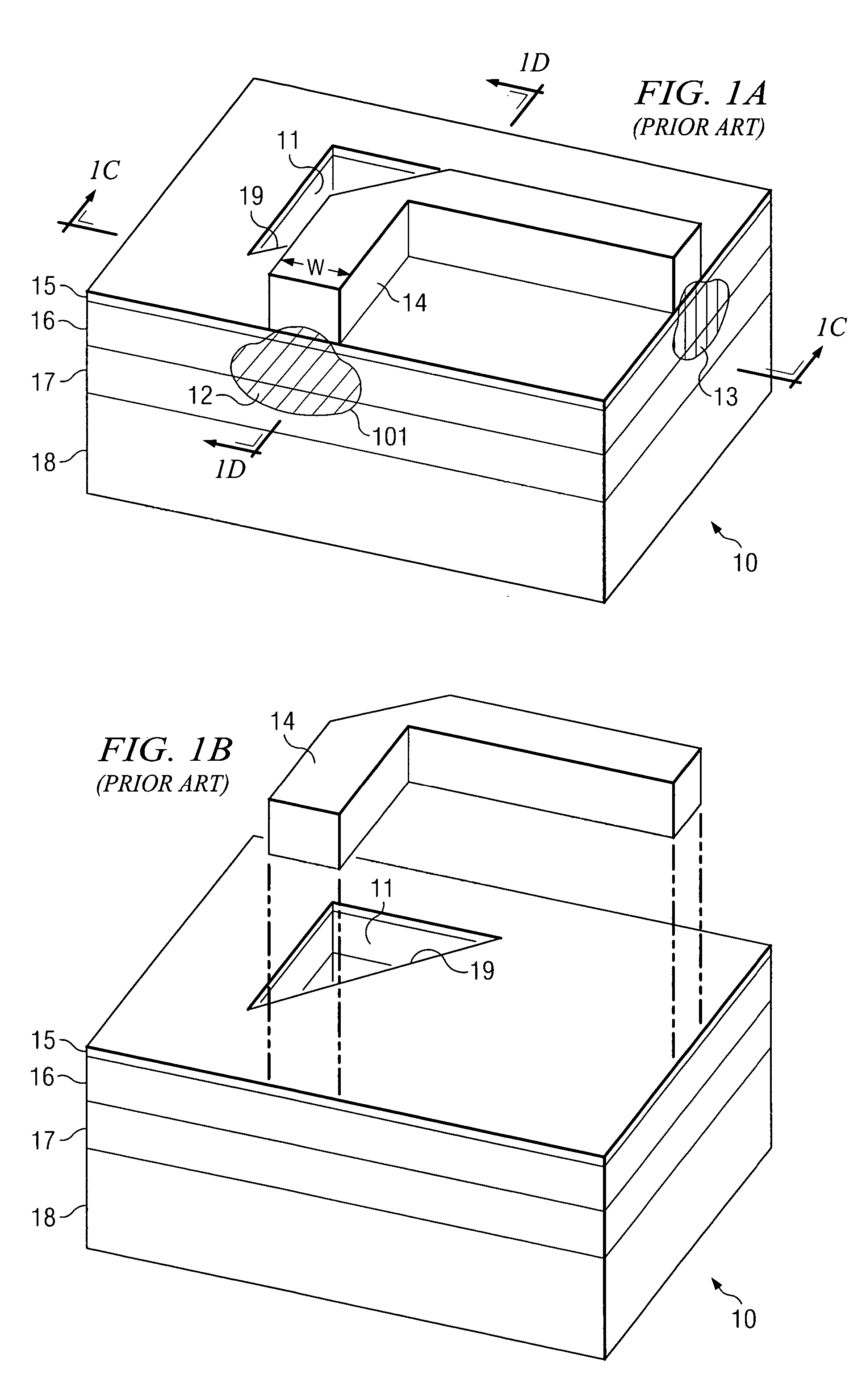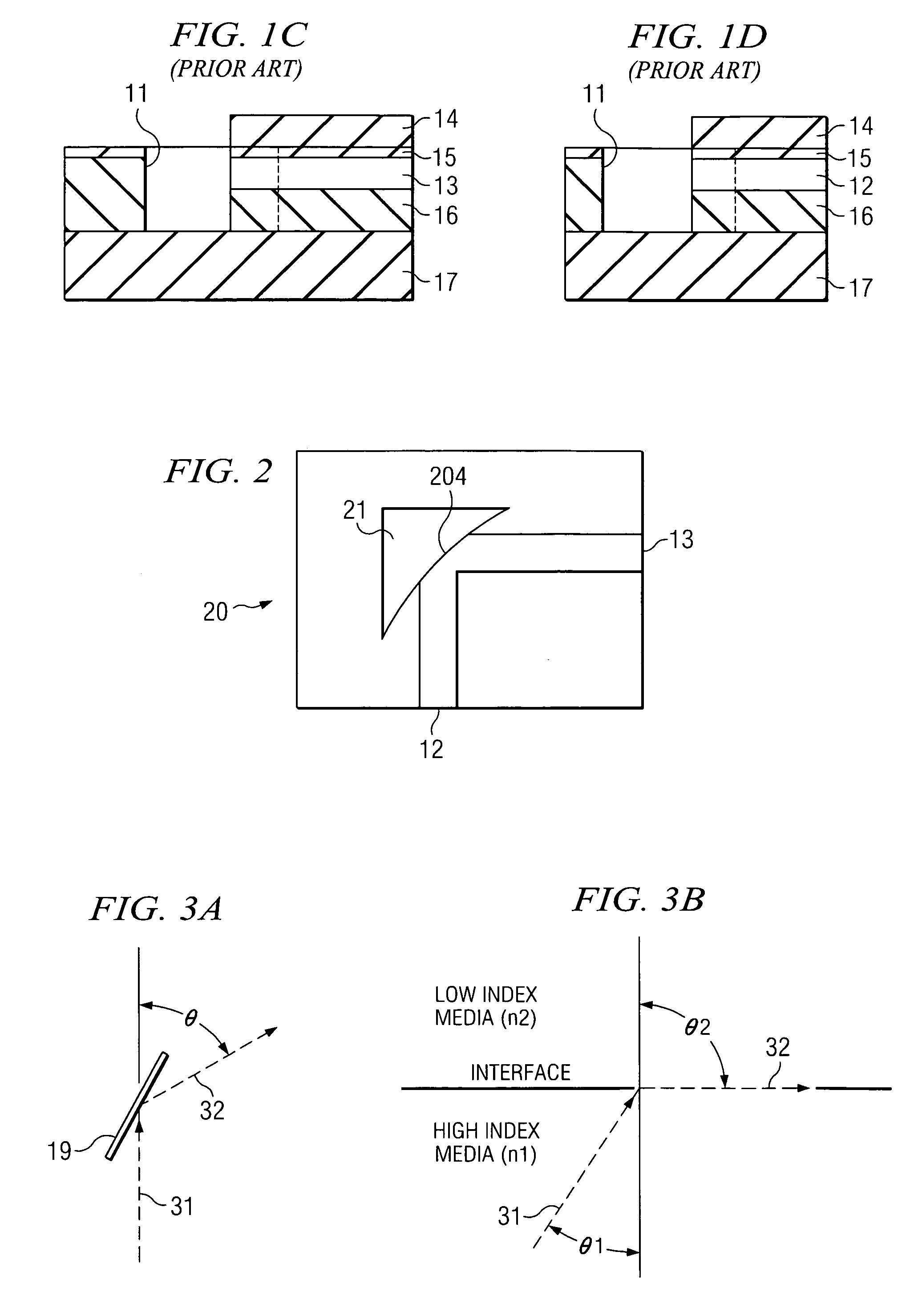System and method for low loss waveguide bends
a waveguide and low-loss technology, applied in the field of system and method for low-loss waveguide bends, can solve the problems of diffraction loss, low index waveguides are not suitable for use, waveguides experience more scattering loss, etc., and achieve the effect of facilitating proper alignment of masks
- Summary
- Abstract
- Description
- Claims
- Application Information
AI Technical Summary
Benefits of technology
Problems solved by technology
Method used
Image
Examples
Embodiment Construction
[0021]FIG. 2 shows one embodiment 20 in accordance with the invention illustrating curved front surface 204 of TIR discontinuity 21. Waveguide 20 can be a ridge waveguide as shown in FIG. 1A with a curved interface with discontinuity 21. The discontinuity is created by an air medium different from the medium of waveguide portion 12 as discussed with respect to FIG. 1A. The curved interface compensates for the phase difference of the reflected guided wave at different regions of the lateral mode profile thereby focusing at least a substantial portion (if not all) of the diffracted optical wave into output waveguide portion 13. The optimal radius of curvature depends on the configuration of the waveguide, such as the waveguide medium and the waveguide width. The optimal radius of curvature can be calculated with commercially available Finite Difference Time Domain (FDTD) code given waveguide parameters.
[0022]It is important to achieve very good alignment of optical surface 204 with wa...
PUM
 Login to View More
Login to View More Abstract
Description
Claims
Application Information
 Login to View More
Login to View More - R&D
- Intellectual Property
- Life Sciences
- Materials
- Tech Scout
- Unparalleled Data Quality
- Higher Quality Content
- 60% Fewer Hallucinations
Browse by: Latest US Patents, China's latest patents, Technical Efficacy Thesaurus, Application Domain, Technology Topic, Popular Technical Reports.
© 2025 PatSnap. All rights reserved.Legal|Privacy policy|Modern Slavery Act Transparency Statement|Sitemap|About US| Contact US: help@patsnap.com



